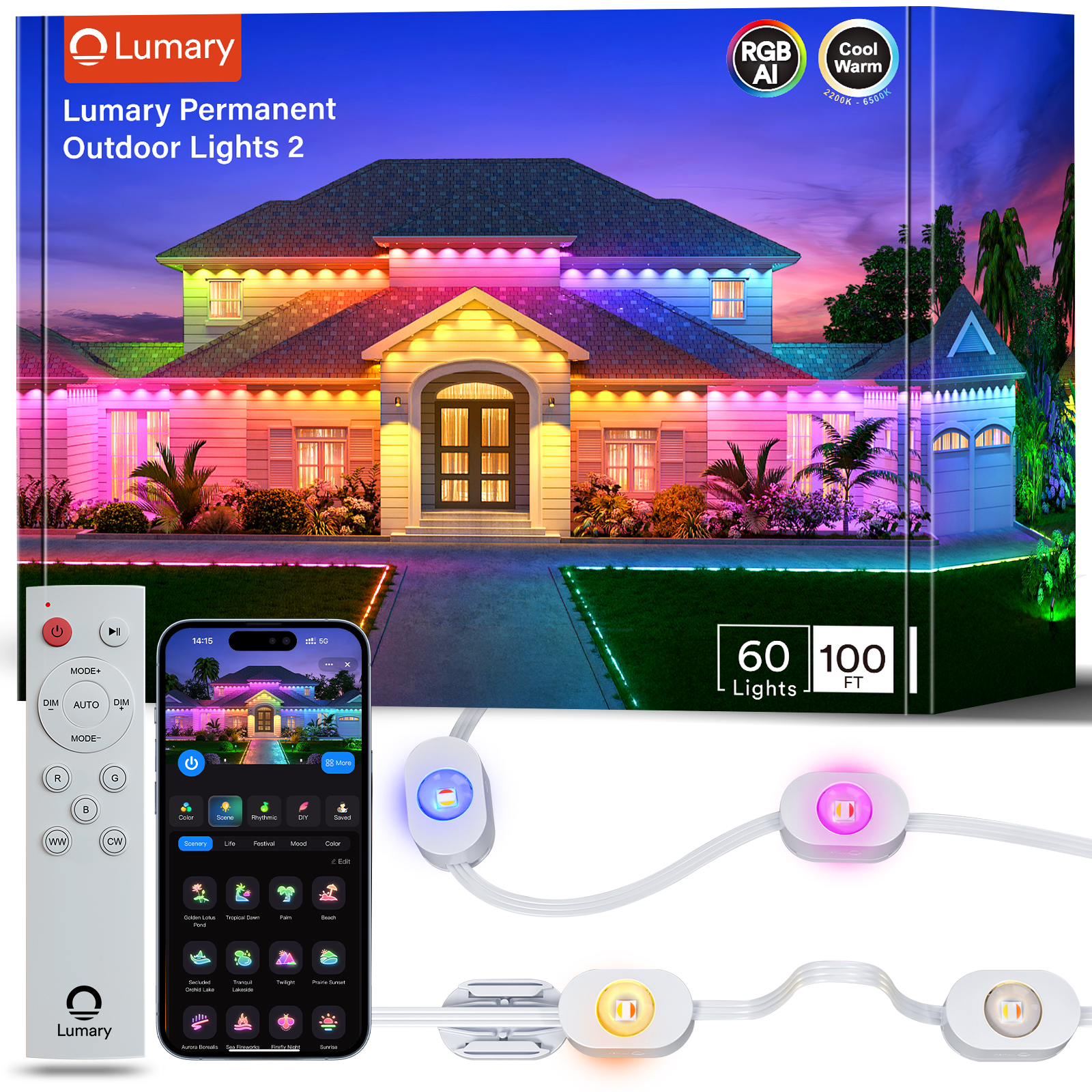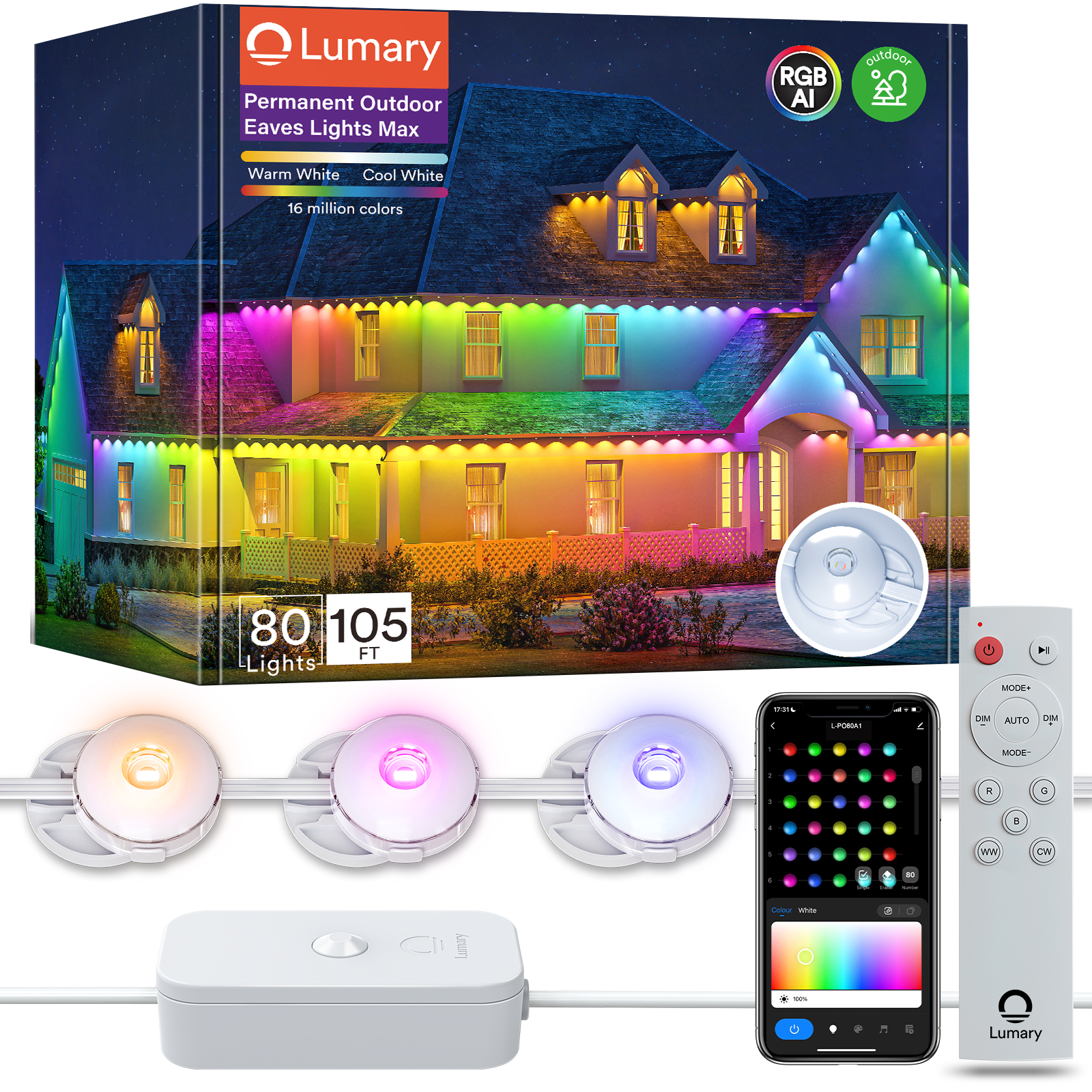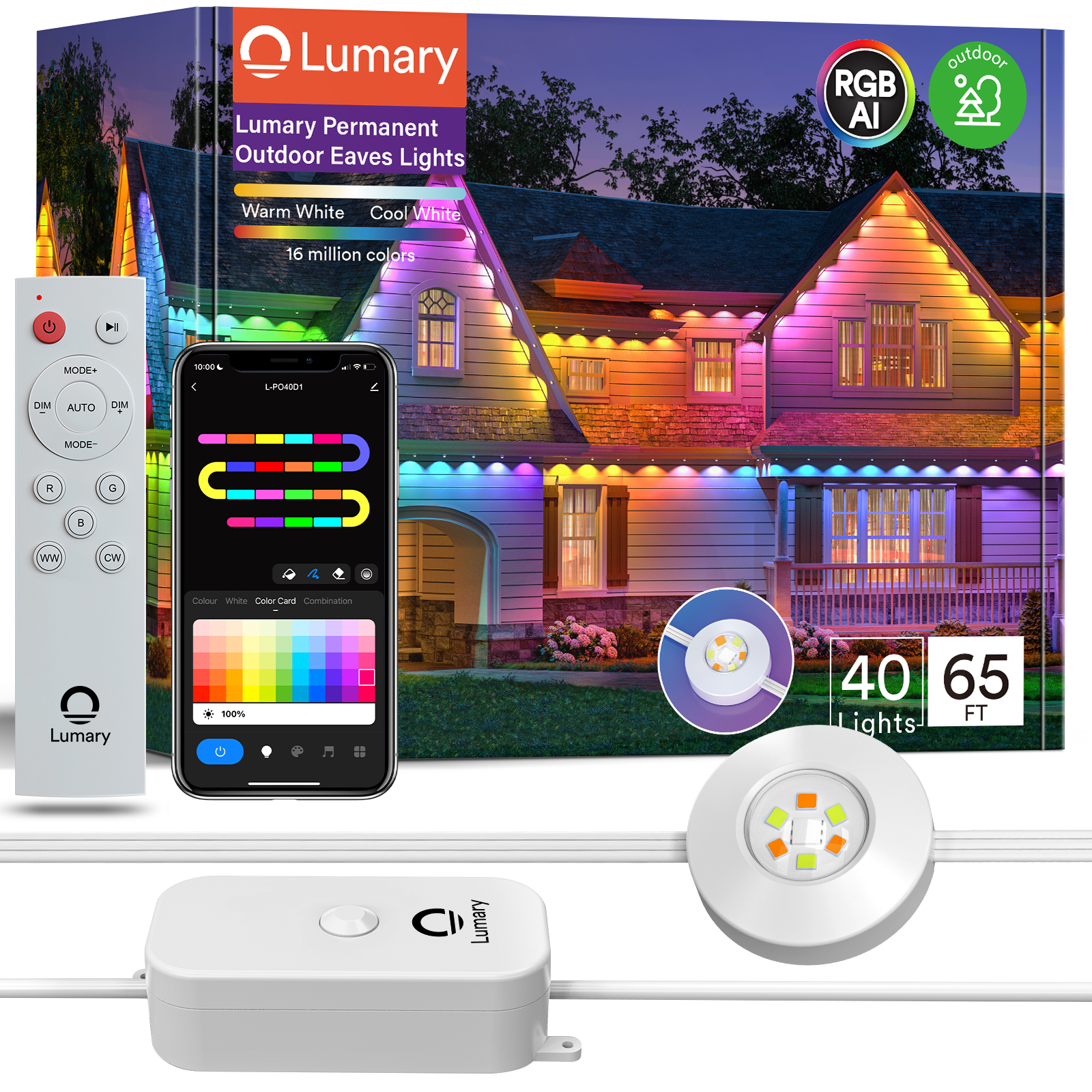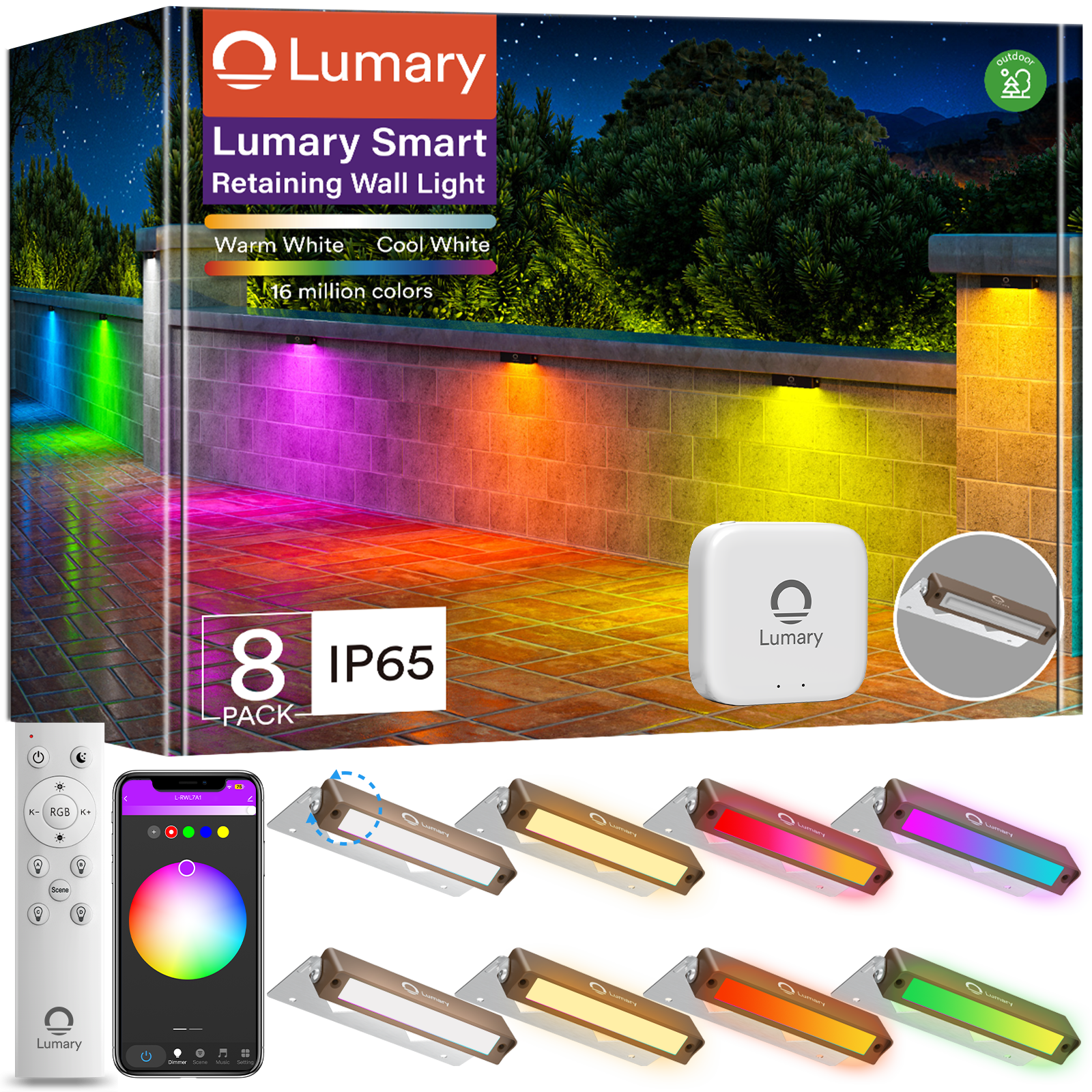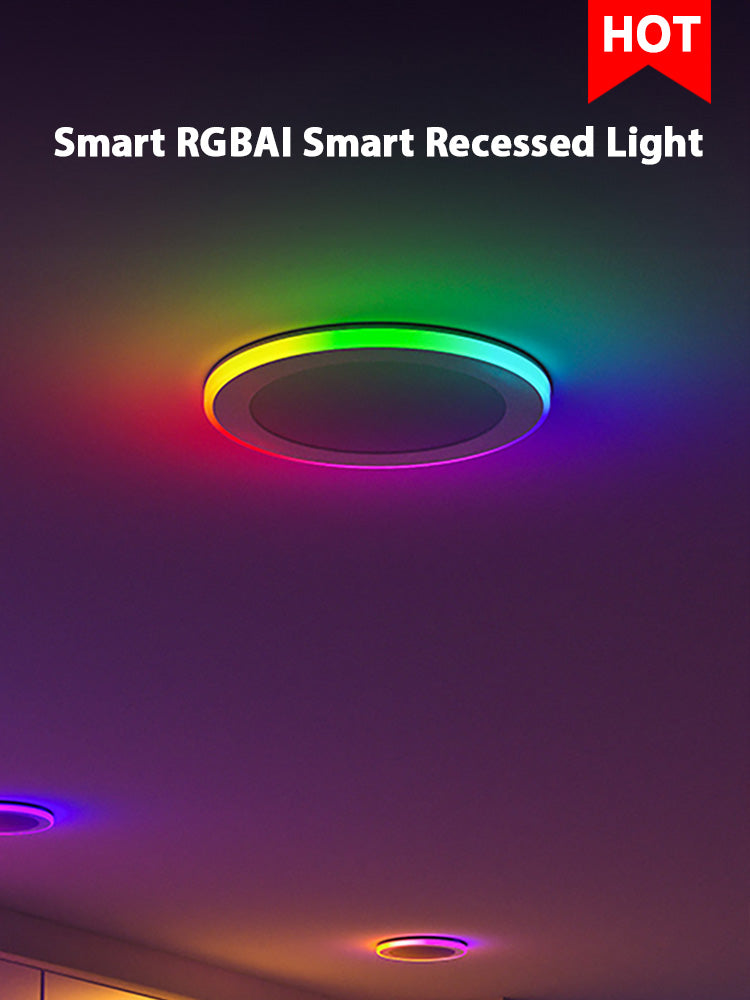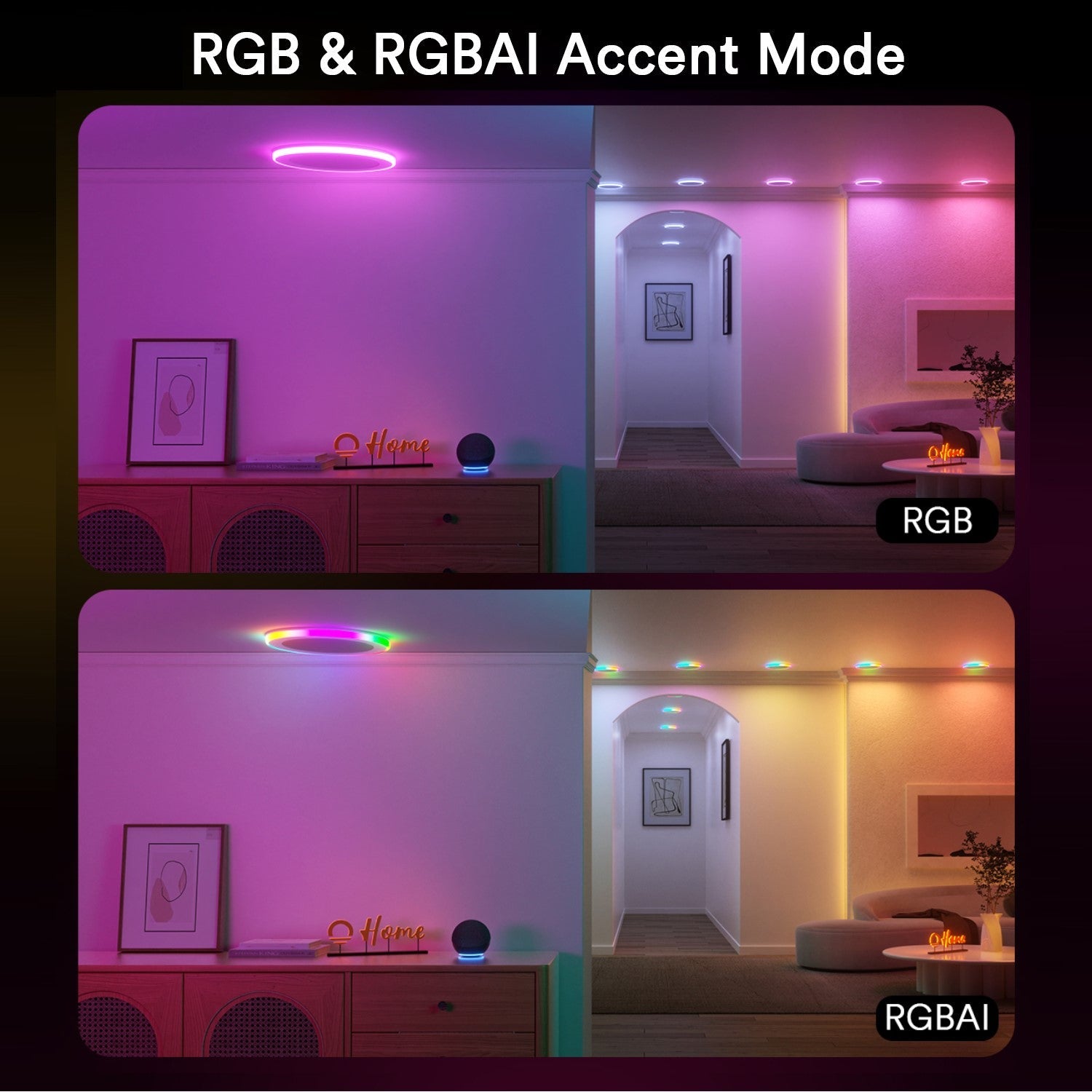Outdoor spaces have become an extension of our homes, with lighting playing a key role in the function and ambiance. LED technology has revolutionized possibilities, with options like RGB, RGBW, and more allowing customizable colors and effects. With so many acronyms and features to evaluate, it can be confusing to determine what's best for your needs and budget. This guide breaks down the key differences.
1. What Do the Letters Mean? Key Terms Explained
Before diving into comparisons of outdoor LED lighting types, let’s briefly decode the alphabet soup of abbreviations involved:
- R = Red
- G = Green
- B = Blue (The RGB color model combines red, green, and blue light to create colors. This is the basis of most LED lighting).
- A = Amber (Added to RGB for warmer yellow/orange tones)
- I = Indigo (Added to RGB for richer blues/purples)
- W = White
- WW = Warm White (Soft white with yellow/orange tones)
- CW = Cool White (Crisp white with bluer tone)
- CCT = Correlated Color Temperature (Allows tuning white shade from warm to cool)
So, by mixing and matching the R, G, and B color models with supplemental hues like amber, indigo, and white variants and specialized controls like CCT, a wide range of advanced decorative LED lighting options emerge. This article will explore the pros, cons, and ideal uses of these various technologies. Keep these abbreviations and terms in mind as we dive deeper!
|
Features |
RGB |
RGBAI |
RGBW |
RGBCW |
RGBCCT |
|
Colors |
Red, Green, Blue |
Red, Green, Blue, Amber, Indigo |
Red, Green, Blue, White |
Red, Green, Blue, Cold White |
Red, Green, Blue, CCT (Color Temperature) |
|
3 in 1 |
RGB + Built-in Independent Chip |
4 in 1 |
4 in 1 + Cold White |
5 in 1 + CCT Chip |
|
|
Color Changing |
Single |
Multiple |
Single |
Multiple |
Multiple |
|
Brightness |
Bright |
Ultra-Bright |
Ultra-Bright |
Ultra-Bright |
Ultra-Bright |
|
Adjustable |
/ |
✔ |
✔ |
✔ |
✔ |
|
Price |
Normal |
Medium |
Medium |
Medium |
Expensive |
2. What is RGB Lighting?
RGB refers to combining light from red, green, and blue diodes to create a spectrum of colors. By adjusting levels of red, green, and blue, RGB lights can produce over 16 million color options. RGB is a versatile, affordable way to add color-changing illumination to any outdoor space. Strings of RGB bulbs add a festive flair to patios, gardens, and landscaping. RGB is especially popular for parties, events, and holidays when dynamic, colorful lighting is desired.

However, basic RGB has some limitations. While capable of generating many colors, RGB struggles to achieve accurate, vibrant shades, especially warm tones like yellows and oranges. And even at full brightness, RGB cannot get as luminous as white light sources. For general illumination, RGB is best as an accent rather than primary light.
3. The Benefits of RGBAI
To show multiple colors or effects at once requires advanced RGBAI technology.
With RGBAI fixtures, multiple LED zones can display different colors and effects in sync or independently. This allows for advanced applications like color waves, gradients, and complex moving patterns. It also enables practical benefits like highlighting architectural elements in different colors. With standard RGB, the whole fixture shows the same effect at once.
So, if you want maximum customization with advanced effects, RGBAI delivers the most sophisticated and adaptable outdoor lighting designs. Controllers allow easy programming of elaborate custom color schemes and movement. The downside is this comes at a premium cost over standard RGB. RGBAI also requires professional installation and more advanced technical know how to operate. But for parties, events, and decorative lighting with complex effects, RGBAI is unmatched.
4. Boosting Brightness with White - RGBW and RGBWW
While capable of creating vibrant hues, even at maximum output, neither RGB nor RGBAI lighting can match the brightness of white light sources. That's why some products incorporate white LEDs along with the color LEDs, creating RGBW and RGBWW options:
RGBW
By adding crisp white to the red, green, and blue mix, RGBW balances superior brightness with color effects. The white LEDs allow RGBW to light up larger areas more effectively. RGBW is perfect for the best of both worlds: brightening a patio while still changing colors for mood lighting.
RGBWW
Here, "WW" stands for warm white, and in the context of lighting, RGBWW is the same as RGBAI, both featuring a full spectrum of colors with additional light options for added warmth and depth. So RGBWW fixtures blend color changing ability with softer, more yellow tinged white light. The warmth gives RGBWW a more cozy and inviting ambiance than the often cool toned light of basic RGBW. Bedrooms, lounges, and hospitality spaces benefit from the gentler tones of RGBWW.
Compare RGBW vs RGBWW by assessing whether you prefer the brighter, whiter output of RGBW or the cozier WW version. Both give more luminous, comfortable white light than RGB alone can achieve. Just note that adding white does raise costs over most basic RGB products. But the boost in illumination and usability is often worth the extra investment.
5. Cool White vs. Warm White RGBCW or RGBWW?
Another option for adding white light is choosing cool white over warm white diodes. So, instead of the RGBWW combinations described above, some products offer RGBCW: RGB plus cool white. As the name implies, cool white shades have more blue tones, giving a brighter, starker white appearance than warm white.
How do you choose between warm white and cool white? It comes down to the desired aesthetic for your space. RGBCW's vibrant white is bolder for modern decorative lighting. Warm White fits better in bedrooms and living spaces where the gentler tones provide a relaxed ambiance. Decide whether you prefer the softness of RGBWW or the vibrance of RGBCW based on your goals for the lighting. Just know both options offer superior brightness and white light than RGB alone.
6. Tuning Shades with RGBCCT Technology
Another emerging innovation is RGBCCT, which combines the color-changing ability of RGB with adjustable color temperature through CCT (correlated color temperature). Normal LED fixtures have a fixed temperature—like RGBW's crisp white or RGBWW's warm white. RGBCCT allows tuning the shade from very warm (yellow/orange) to very cool (blue) and everything in between.
This tunable white ability lets users customize the tint and mood of the light, whether showing white or colors. It ensures shades render accurately as the color temperature adjusts across the spectrum. This tunability makes RGBCCT perfect for illuminating garden landscapes or architectural accents where variable lighting scenes are desired. It creates almost limitless possibilities while ensuring high-quality light across all temperatures.
The addition of tunable CCT adds cost over conventional LEDs but provides exceptional versatility. If your goal is high quality white light able to range from invigorating daylight to cozy warmth, RGBCCT offers maximum adjustability.
7. Key Considerations When Comparing LED Technologies
Choosing the right outdoor LED lighting depends primarily on a few key considerations:
- Desired Effects Determine the priorities for your lighting. Simple accent color changing? Structural illumination? Advanced motion effects? Start here to narrow down technology options.
- Light Brightness If basic atmosphere lighting is needed, RGB works well for color washes. For area illumination, RGBW/RGBWW output brighter light with added white diodes. Assess lumen output needs.
- Light Quality Budget RGB has less rich color rendering than RGBAI/RGBCCT with specialized chips. Prioritize quality components if vibrant, accurate hues matter most.
- Ambience Preference Do you prefer cozier warm white tones or crisper cool white lighting? Contrast RGBWW vs RGBCW. CCT tunability provides both.
- Budget- Prices span small RGB strings to advanced RGBAI/RGBCCT fixtures. Set cost ceilings based on other priority features. Quality, brightness, and effects increase with price.
- Ease of Use - RGBAIand RGBCCT require professional design/programming for advanced features vs plug and play RGB. Determine the complexity needed.
8. Best Uses for Each Lighting Type
Types of Accent Lighting
- Simple Colors:For basic, affordable color changing string lights to brighten garden contours, pathways, or patios, RGB is ideal. The festive hues add decorative flair on a budget.
- Vibrant Colors:To accurately accent architectural details, fountains, plants, and other garden elements with nuanced color washes, vibrant RGBAI fixtures render richer hues.
Types for Area Lighting
- Balanced Brightness:To effectively illuminate dining spaces, and seating areas or complement security lighting with light that switches from crisp white to colorful, choose versatile RGBW bulbs. The white LEDs radiate brighter illumination than color LEDs alone.
- Cozy Warmth: For lounges, gazebos, and relaxed social corners that call for an inviting ambience, gentle RGBWW lights bathe spaces in warm white and customizable colors perfect for unwinding.
Types for Mood Lighting
- Crisp Cool: If you prefer the bold, modern style of cooler LED white light tones, select RGBCW outdoor lights for their vibrant style over softer warm white. Crisp shading energizes.
- Fully Tunable: For maximum flexibility ranging from bright, invigorating daylight white to intimate warm mood light, adjustable RGBCCT empowers you to tune shades to suit any occasion or need.
Conclusion
Outdoor LED lighting offers endless possibilities for custom looks tailored to your space. Start by defining priorities like ambiance, brightness needs, control requirements, and budget. RGB suits simple festive lighting needs in most cases, while options like RGBW, RGBAI, and beyond enable more refined illumination capabilities. Advanced technologies like RGBAI allow elaborate lighting effects for those with more complex visions and the budget to support quality execution.
By carefully aligning technical specifications and aesthetics to your goals, you can leverage outdoor LEDs for functional illumination or stunning decoration through color, motion, and light. Clarify exactly what you wish to achieve and match those desires to the wealth of innovative lighting solutions now available.


